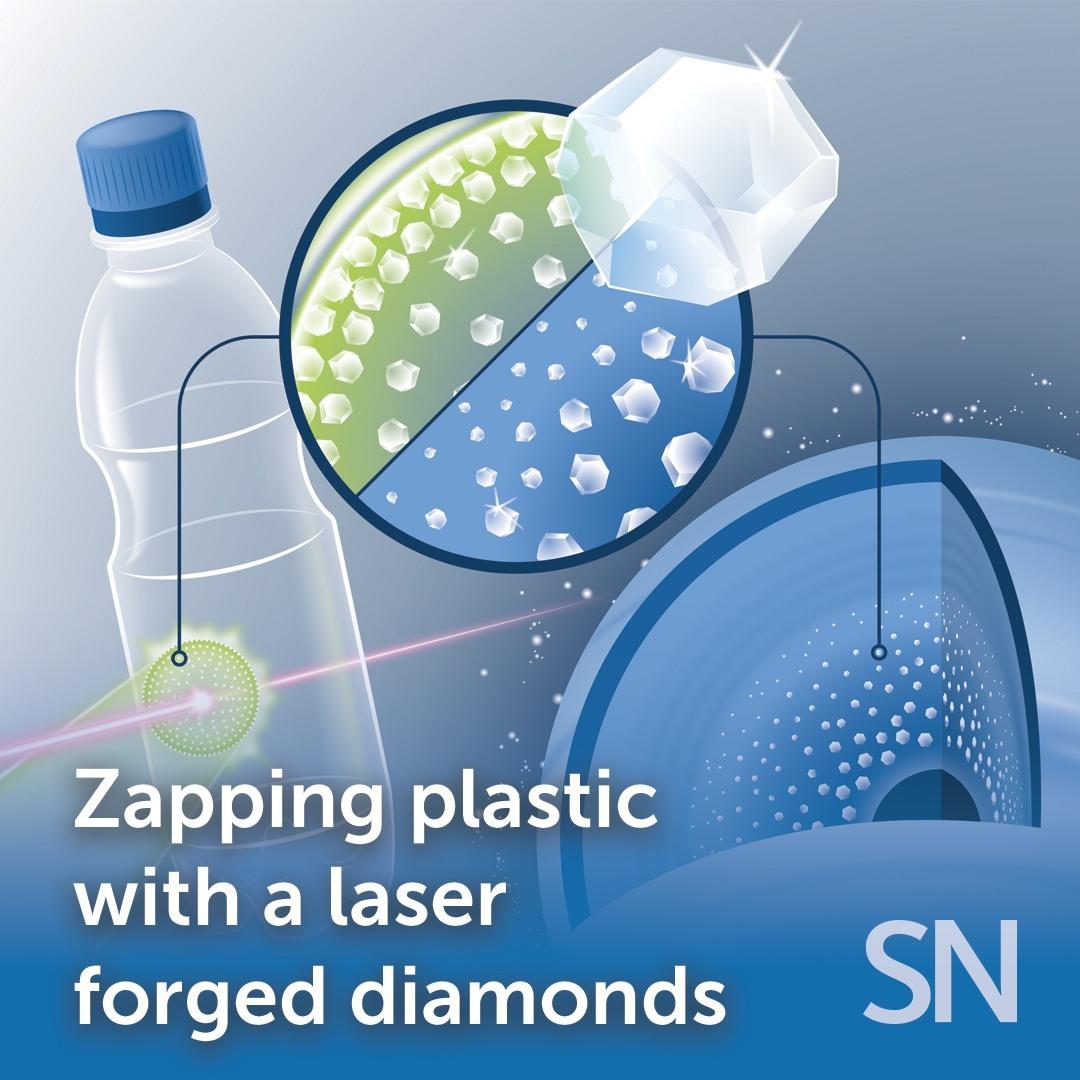A laser blast produces miniature diamonds from plain-old plastic — the same kind used in soda bottles. When squeezed to about a million times Earth’s atmospheric pressure and heated to thousands of degrees Celsius, polyethylene terephthalate, or PET, forms nanodiamonds, physicist Dominik Kraus and colleagues report. Each laser blast in their experiment sent a shock wave careening through the plastic, amping up the pressure and temperature within (as illustrated above; laser shown in green). Probing the material with bursts of X-rays ( red) revealed that nanodiamonds (inset) had formed. Ice giant planets, such as Neptune and Uranus, have similar temperatures, pressures and combinations of chemical elements as the materials in the study, suggesting that diamonds may rain down in those planets’ interiors (lower right). What’s more, the researchers say, the new technique could be used to manufacture nanodiamonds for use in quantum devices and other applications. Nanodiamonds are commonly produced using explosives, Kraus says, but that is not an easy process to control. The new technique could create nanodiamonds that are more easily tailored for particular uses, such as quantum devices made using diamond with defects.
(
: HZDR/Blaurock)
#science #physics #laser #diamond #nanodiamond #planetaryscience #uranus #neptune #plasticA laser blast produces miniature diamonds from plain-old plastic — the same kind used in soda bottles. When squeezed to about a million times Earth’s atmospheric pressure and heated to thousands of degrees Celsius, polyethylene terephthalate, or PET, forms nanodiamonds, physicist Dominik Kraus and colleagues report. Each laser blast in their experiment sent a shock wave careening through the plastic, amping up the pressure and temperature within (as illustrated above; laser shown in green). Probing the material with bursts of X-rays ( red) revealed that nanodiamonds (inset) had formed. Ice giant planets, such as Neptune and Uranus, have similar temperatures, pressures and combinations of chemical elements as the materials in the study, suggesting that diamonds may rain down in those planets’ interiors (lower right). What’s more, the researchers say, the new technique could be used to manufacture nanodiamonds for use in quantum devices and other applications. Nanodiamonds are commonly produced using explosives, Kraus says, but that is not an easy process to control. The new technique could create nanodiamonds that are more easily tailored for particular uses, such as quantum devices made using diamond with defects.
(🎨: HZDR/Blaurock)
#science #physics #laser #diamond #nanodiamond #planetaryscience #uranus #neptune #plastic

